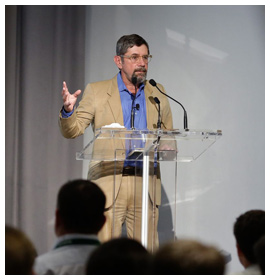
A lot happened during Hindy’s time abroad. He would routinely wake up to the sound of explosions and gunfire. His wife, Ellen, gave birth twice; Steve was abducted, but only once. When the AP offered him a new post in Manila, Philippines, Hindy — at the urging of his wife — politely declined.
Hindy started the Brooklyn Brewery in 1987; it has since grown to become one of the country’s most successful craft breweries, and it’s now the 11th largest in the U.S. But Hindy’s passion for writing never subsided. He’s penned thoughtful editorial pieces for The New York Times and New York Post and, in 2007, Hindy authored his first book, Beer School: Bottling Success at the Brooklyn Brewery. Many folks in the craft beer community regard Beer School as one of the best entrepreneurial accounts of starting a brewery.
Now Hindy is writing a second non-fiction work: The Craft Beer Revolution: How a Band of Microbrewers Transformed the World’s Favorite Beverage.
In the book, Hindy examines the past 30 years of craft beer growth and provides a first-hand account of how a handful of microbrewery pioneers banded together to shift the landscape of beer in America.
Brewbound asked Hindy to share the inside scoop on the new project.
Brewbound: Can you share a brief synopsis of “The Craft Beer Revolution?”
Steve Hindy: “The Craft Beer Revolution: How a Band of Microbrewers Transformed America’s Favorite Beverage” will be published by Palgrave-Macmillan and be released next spring. It’s an inside history of craft beer, craft brewers, the Brewers Association of America, Brewers Association, Beer Institute and the National Beer Wholesalers Association and the beer media, informed by my personal experience and interviews with key people.
BB: Will Brooklyn Brewery’s story be told alongside some of those breweries and organizations?
SH: The Brooklyn story will be told only as it related to the overall history.
BB: How does this work compare to your last book, Beer School, and what type of reader would you like to see purchase The Craft Beer Revolution?
SH: Beer School has been popular with beer enthusiasts and business schools. I hope this book reaches the same audience and more.
BB: How long have you been writing The Craft Beer Revolution?
SH: I started writing in January, but I’ve been taking notes for many years. It’s an important story. Tom Acitelli did a good job with “The Audacity of Hops,” telling the story from a historian’s point of view. My story is told from a brewer’s point of view.
BB: What kinds of stories can readers expect? Are any anecdotal business lessons included in the text?
SH: There are many great individual stories in the book, but it is really the collective work of brewers and enthusiasts that has enabled the revolution to develop. That’s the story I want to tell.
The Craft Beer Revolution: How a Band of Microbrewers Transformed the World’s Favorite Beverage is currently slated for an April, 2014 release.
